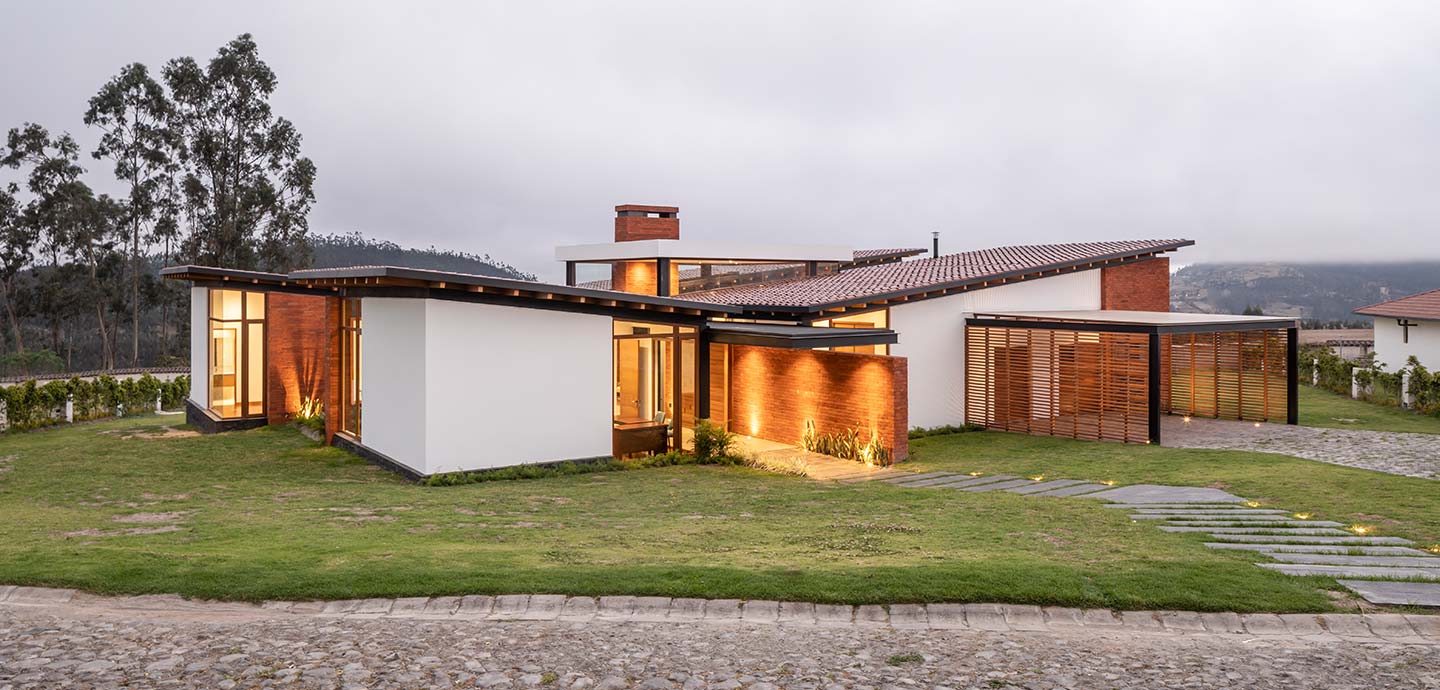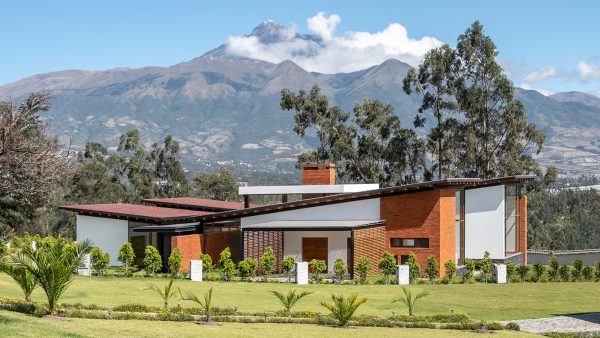Studio Alfa designs House AO in response to the site's harsh conditions
Designed by Studio Alfa, House AO sits on a plot in an elevated area bordering the city of Otavalo, Ecuador. The preponderating views are towards the east, gazing at the Imbabura Volcano.
“House AO is based within a context where landscape is one of the core conditioning factors for its design. The client requested that the main spaces take part of the best views; the architectonic response was to propose spatiality where the user, the architecture, and the setting would dialogue,” explained the architects.

The harsh weather conditions were a key factor in the design and construction process.
“Found within the equatorial Andes, the site is very cold; this posed another important condition: to reduce incidence of the strong northern winds that flow throughout the year and the low temperatures without using electromechanical heating systems,” said the architects.
These conditions influenced the orientation of the house - the main spaces have the best views and the maximum amount of sunlight, maintaining a pleasant temperature during the whole day.
The volumetric proposal features two parallel volumes placed over a plinth of stone, and rotated over the lot so they align with both the rising sun and the peak of the Imbabura Volcano. This rotation also allows for the northern winds to hit against the building and prevents dust and cold from entering the house. Two perpendicular axes cross the volumes connecting the different spaces: service, social, and private.
“To enhance the social area, which according to the client had to be the main space, a five meter height living room was placed at the center of the house with absolute transparency towards the exteriors. To the east of the living room an exterior social area with a central fire-pit, a bench, and lush vegetation complements the area. Towards the west, a closed barbecue area acts as a link with the exterior and functions as an element to expand the social area; the transparency of this space allows a direct view of the Imbabura,” said the architects.
The raised roofs capture the morning sun, while the large glass windows allow for abundant sunlight in the interior spaces. Materials such as stone, brick, and roof-tile aim to root the architecture to its context and maintain harmony with the surrounding houses.
“The exposed steel structure and the white walls conjugate harmoniously in the duality of the contemporary and traditional architectonic languages,” the architects concluded.
Photography by: Bicubik
